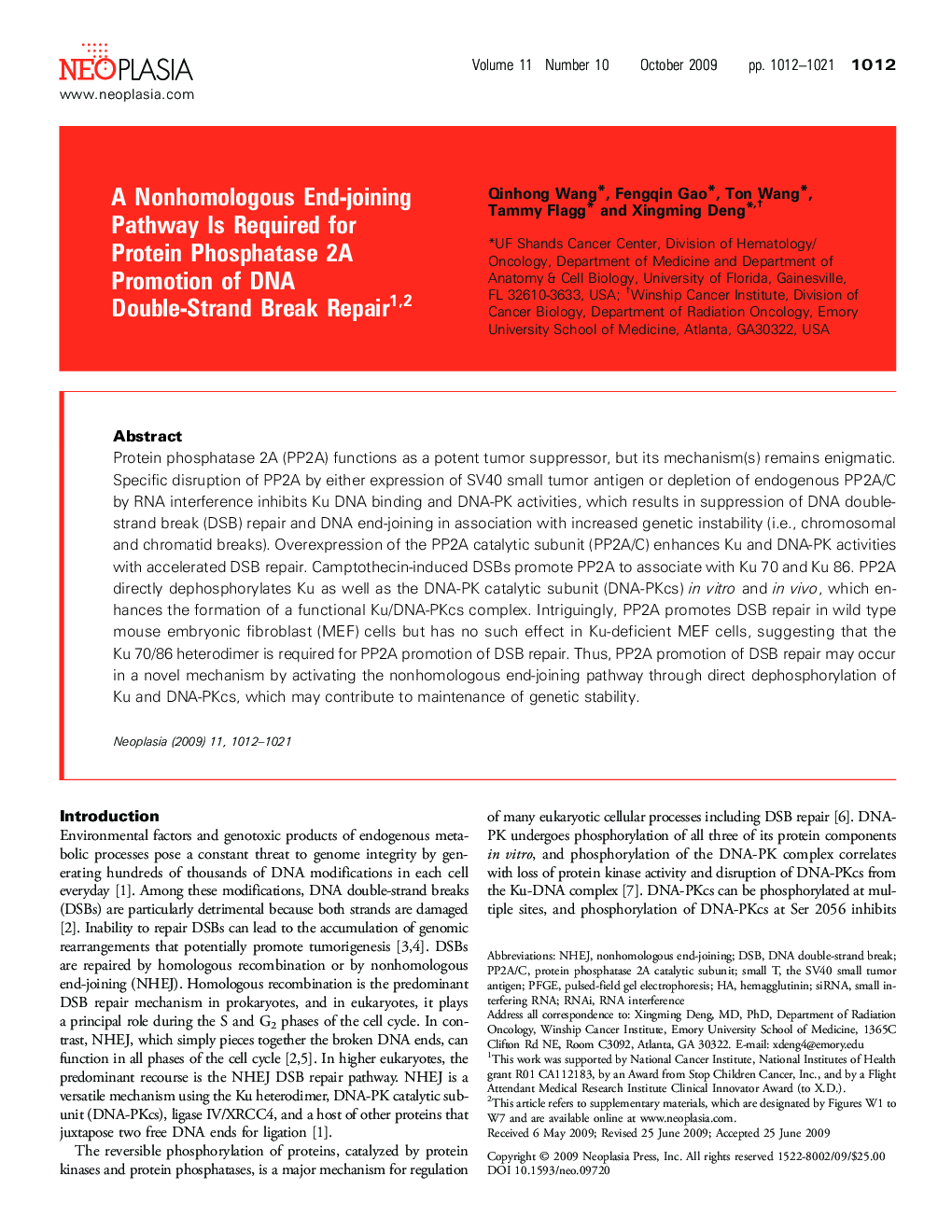| Article ID | Journal | Published Year | Pages | File Type |
|---|---|---|---|---|
| 2151924 | Neoplasia | 2009 | 17 Pages |
Abstract
Protein phosphatase 2A (PP2A) functions as a potent tumor suppressor, but its mechanism(s) remains enigmatic. Specific disruption of PP2A by either expression of SV40 small tumor antigen or depletion of endogenous PP2A/C by RNA interference inhibits Ku DNA binding and DNA-PK activities, which results in suppression of DNA double-strand break (DSB) repair and DNA end-joining in association with increased genetic instability (i.e., chromosomal and chromatid breaks). Overexpression of the PP2A catalytic subunit (PP2A/C) enhances Ku and DNA-PK activities with accelerated DSB repair. Camptothecin-induced DSBs promote PP2A to associate with Ku 70 and Ku 86. PP2A directly dephosphorylates Ku as well as the DNA-PK catalytic subunit (DNA-PKcs) in vitro and in vivo, which enhances the formation of a functional Ku/DNA-PKcs complex. Intriguingly, PP2A promotes DSB repair in wild type mouse embryonic fibroblast (MEF) cells but has no such effect in Ku-deficient MEF cells, suggesting that the Ku 70/86 heterodimer is required for PP2A promotion of DSB repair. Thus, PP2A promotion of DSB repair may occur in a novel mechanism by activating the nonhomologous end-joining pathway through direct dephosphorylation of Ku and DNA-PKcs, which may contribute to maintenance of genetic stability.
Keywords
Related Topics
Life Sciences
Biochemistry, Genetics and Molecular Biology
Cancer Research
Authors
Qinhong Wang, Fengqin Gao, Ton Wang, Tammy Flagg, Xingming Deng,
